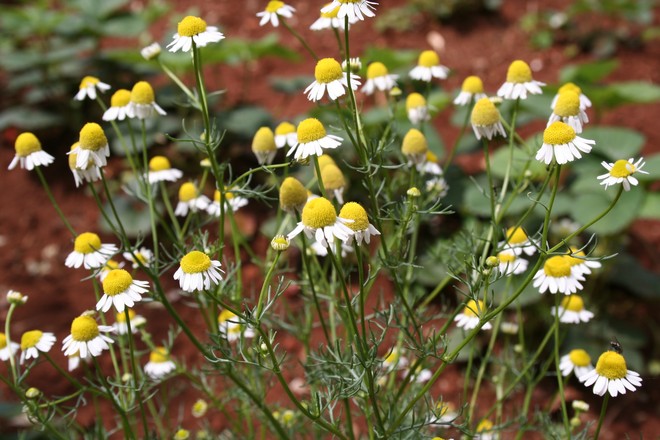Chamomile, a delicate and charming herb, has been treasured for centuries for its soothing properties and gentle beauty. Belonging to the Asteraceae family, chamomile is available in two common varieties: German chamomile (Matricaria chamomilla) and Roman chamomile (Chamaemelum nobile). Both varieties boast similar therapeutic benefits, making them popular choices in herbal remedies and skincare.
The daisy-like appearance of chamomile blooms is captivating, with white petals surrounding a bright yellow center. The name “chamomile” is derived from the Greek words “khamai,” meaning “ground,” and “melon,” meaning “apple,” alluding to its low-growing nature and apple-scented fragrance. This delightful aroma, combined with the herb’s calming effects, has earned chamomile the nickname “the plant’s physician” due to its ability to revitalize neighboring plants.
The most well-known use of chamomile is in herbal teas, renowned for their calming and sleep-inducing properties. A warm cup of chamomile tea is a popular remedy for insomnia, stress, and anxiety, promoting relaxation and a sense of tranquility. Its gentle nature also makes it suitable for children and individuals seeking natural alternatives to alleviate restlessness.
Chamomile possesses anti-inflammatory and antioxidant properties, making it a valuable ingredient in skincare products and topical treatments. The essential oils in chamomile can help soothe skin irritations, reduce redness, and accelerate the healing process for minor wounds and burns. It is a common component in natural skincare products like lotions, creams, and balms, offering gentle nourishment to the skin.
Aside from its therapeutic uses, chamomile has a rich history steeped in cultural significance. Ancient Egyptians revered chamomile for its healing properties and dedicated it to their sun god, Ra. Romans and Greeks also embraced chamomile, using it in medicinal and cosmetic applications. Over time, chamomile became a symbol of patience, peace, and positive energy, with diverse cultures incorporating it into rituals and celebrations.
Growing chamomile is relatively straightforward, and it thrives in sunny locations with well-drained soil. It is a popular choice for home gardens, attracting beneficial insects like bees and butterflies. Additionally, chamomile is known to enhance the growth of nearby plants due to its nurturing properties, earning it the title “the plant’s physician.”
In conclusion, chamomile is a cherished herb with a long history of use in herbal medicine and skincare. Its gentle beauty and soothing properties have made it a timeless favorite in various cultures and therapeutic practices. Whether enjoyed as a calming tea or incorporated into skincare regimens, chamomile continues to enchant and heal, exemplifying the enduring power of nature’s remedies.
Note: When using chamomile for medicinal purposes, it’s essential to consult a healthcare professional, especially if you have allergies or are pregnant or nursing. Some people may experience adverse reactions to chamomile, so it’s best to exercise caution and seek expert advice before use.
